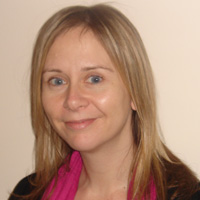Communication Impairments Part 3: Cleft Palate, Hearing Impairment, Stammering and Selective Mutism


This session is the third of four which describe different speech, language and communication impairments. This session focuses on the following conditions: stammering, selective mutism, cleft palate/velopharyngeal dysfunction and hearing impairment. The defining characteristics, prevalence and diagnostic criteria are described for each condition, as are referral routes and key supporting agencies.
Learning objectives
By the end of this session you will be able to:
- Identify the key speech, language and communication characteristics associated with stammering, selective mutism, cleft palate and hearing impairment
- Identify when it may be appropriate to refer a child to a speech and language therapist, an audiologist, or the child development team for multi-professional assessment
- Explain how to access the key agencies providing advice and support for parents of children with speech, language and communication difficulties
This is the third of four sessions that explore atypical speech, language and communication development.
Before commencing this session you should complete the following HCP sessions:
- 07_01 Child as Listener and Speaker Part 1: Non-verbal Apects of Communication (402-0034)
- 07_02 Child as Listener and Speaker Part 2: Verbal Aspects of Communication (402-0010)
Alison Wintgens is a consultant speech and language therapist and Trust Lead for Speech and Language Therapy in South West London and St George’s Mental Health NHS Trust, London. Her clinical work is on a multi-disciplinary Tier 3 CAMHS team where she sees children and young people with emotional and behavioural problems, many with a range of additional communication disorders. She was the regional adviser in child mental health and is currently the national adviser in selective mutism for the Royal College of Speech and Language Therapists (RCSLT). She has also served on the committee of the London and South East Branch of The Association of Child and Adolescent Mental Health.
Alison is a visiting lecturer at University College London and conducts post-graduate training in the areas of selective mutism, and child and adolescent mental health disorders and their relationship with disorders of communication. She has published articles in the RCSLT Bulletin, Developmental Medicine and Child Neurology and Archives of Diseases in Childhood and Good Autism Practice as well as written several book chapters and reviews for Child Language, Teaching and Therapy and The Journal of Child Psychology and Psychiatry. She is co-author with Maggie Johnson of The Selective Mutism Resource Manual.


Karen is a specialist speech and language therapist working at the Michael Palin Centre for Stammering Children. Her current role involves clinical work, teaching and contributing to research projects. She is also involved in a project looking at the impact on parents of pre-school children who stammer and she is interested in working with young children who stammer, and their families.
She has previously worked in a variety of settings including community clinics, mainstream schools and schools for children with moderate learning difficulties and autism.
Karen is currently studying for a MSc in Joint Professional Practice: Language and Communication. She is a registered member of the Royal College of Speech and Language Therapy and has an RCSLT advisory role with regards to stammering.
Liz is Lead Speech and Language Therapist and Clinical Director for the South West Cleft Lip and Palate Service based at Frenchay Hospital in Bristol. She is an RCSLT Advisor on cleft lip and palate.
Her research interests have centred around best management for children and adults with cleft palate, focussing on speech results from surgery and therapy.
She is currently President-elect of the Craniofacial Society of Great Britain and Ireland and Chair of the Lead Speech and Language Therapists Cleft Forum.


Sarah Worsfold is a Senior Research Fellow working at the South of England Cochlear Implant Centre and on the Hearing Outcomes in Teens Project which are both at the University of Southampton.
She has worked as a speech and language therapist with children and adults with hearing impairment for 30 years. Her research interests are particularly in the areas of assessment and (re)habilitation. She is an advisor on hearing impairment to the Royal College of Speech and Language Therapists.
- Child as Listener and Speaker Part 2: Verbal Aspec...
- Posted By eIntegrity Healthcare e-Learning
- Posted Date: 2025-02-21
- Location:Online
- This is the second of two sessions which describe the language processing system and the challenges ...
- Child as Listener and Speaker Part 1: Non-verbal A...
- Posted By eIntegrity Healthcare e-Learning
- Posted Date: 2025-02-21
- Location:Online
- This session is the first of two which describe the skills and knowledge that underpin the understan...
- Child Mental Health: Getting a Good Start course
- Posted By eIntegrity Healthcare e-Learning
- Posted Date: 2025-02-21
- Location:Online
- This session will outline the factors in the first 5 years of life that contribute to the developmen...
- Fantastic Twos - Common Behavioural and Emotional ...
- Posted By eIntegrity Healthcare e-Learning
- Posted Date: 2025-02-21
- Location:Online
- This session covers some of the behavioural problems which can result from poor mental health in pre...
- Communication Impairments Part 4: Autistic Spectru...
- Posted By eIntegrity Healthcare e-Learning
- Posted Date: 2025-02-21
- Location:Online
- This session is the last of four that looks at different speech, language and communication impairme...








